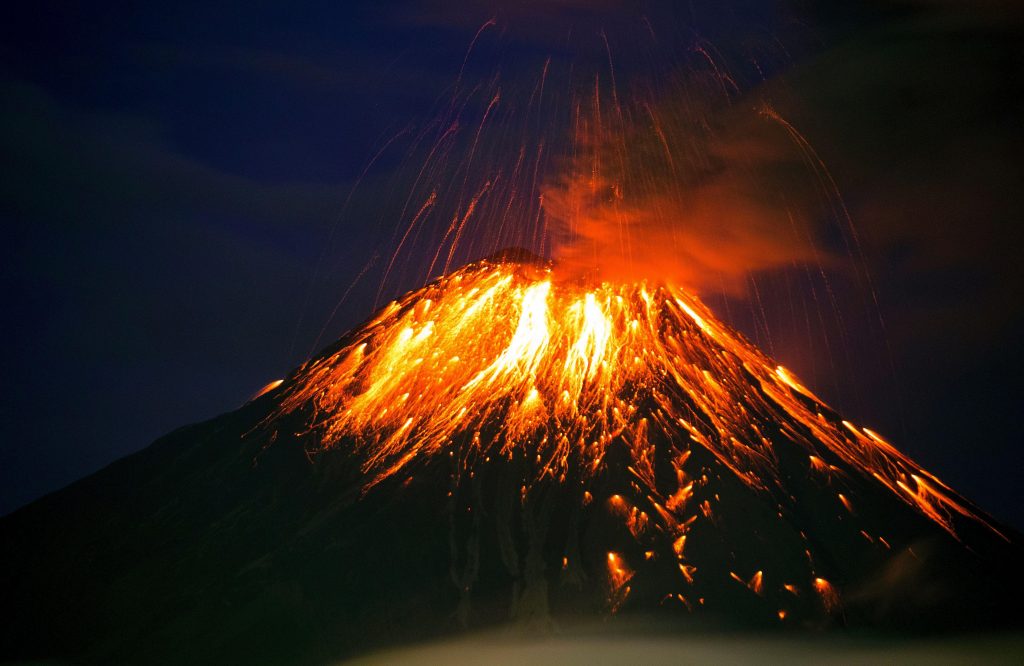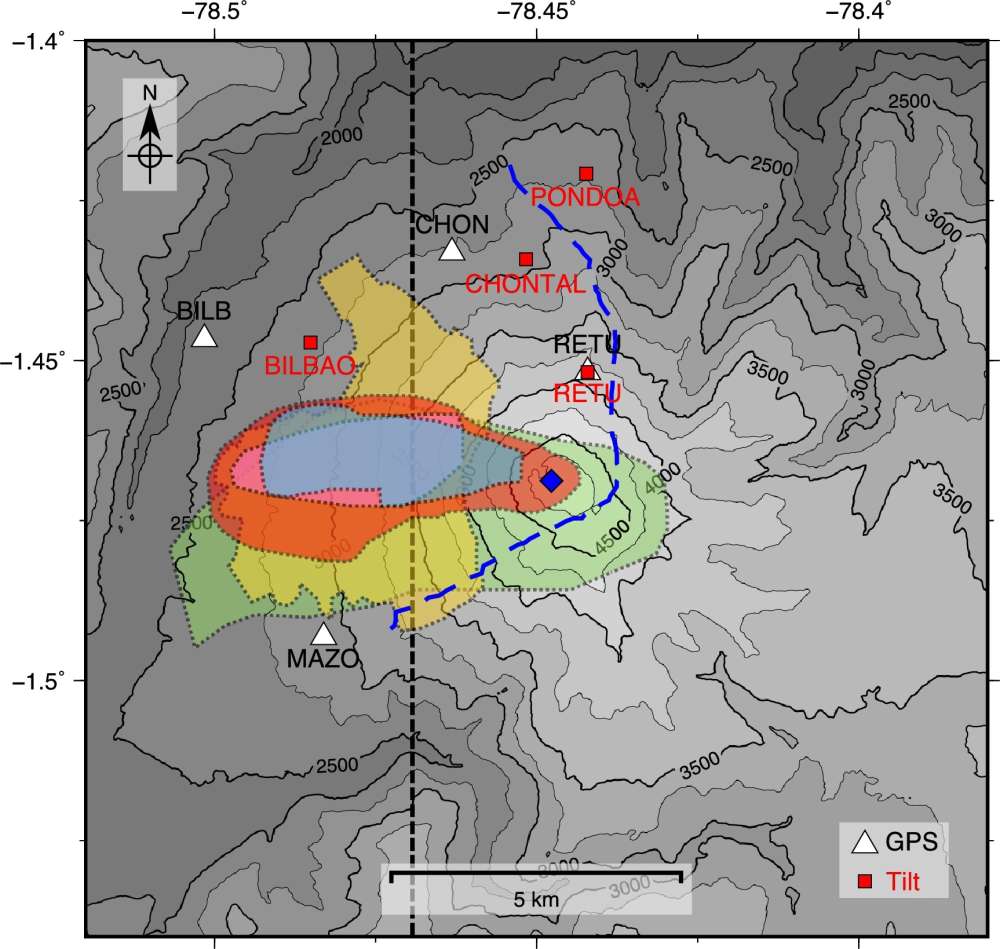The Tungurahua volcano in Ecuador is showing early signs of impending catastrophic collapse.
Scientists discovered substantial internal damage from ongoing magma activity analysing satellite images.

One of South America’s most active volcanoes, Tungurhua – also known in Ecuador as the ‘Throat of Fire’ or ‘The Black Giant’ – is showing early warning signs of “potential collapse.” The resulting landslides would cause widespread damage to the area.
In a new study, scientists found very rapid deformation of Tungurahua’s west flank, probably caused by imbalances between magma being supplied and magma being erupted.
Flank failure is one of the most destructive processes on Earth, whereby a portion of a volcano collapses and creates landslides and explosive eruptions.
The largest tsunami on earth was triggered by a massive flank collapse that fell into the narrow inlet of Lituya Bay in Alaska.

So what’s going on at Tungurahua volcano?
Geophysical and geochemical monitoring of the volcano have shown that magma supply is one of a number of factors that can cause or contribute to volcanic flank instability.
So while there is a risk of possible flank collapse, the uncertainty of these natural systems also means it could remain stable.
According to the lead scientist of the new science study: “Shallow magma transport and storage are key dynamic processes at the heart of hazard assessment and event forecasting for eruptive activity and flank collapse. The results of this study highlight the importance of monitoring volcanoes with a history of flank collapse and how this can be incorporated into routine geophysical and geodetic volcanic surveillance.”
Here an epic video of an eruption of the Throat of Fire:
Collapse history of Tungurahua
Tungurahua collapsed at the end of the Late Pleistocene.
After rebuilding itself, the volcano collapsed again about 3,000 years ago, destroying an area of 80km sq.
In 1999, 25,000 people were evacuated after an eruption of the volcanic peak. Now imagine the impact on human life during a new flank failure at the Black Giant Volcano.











